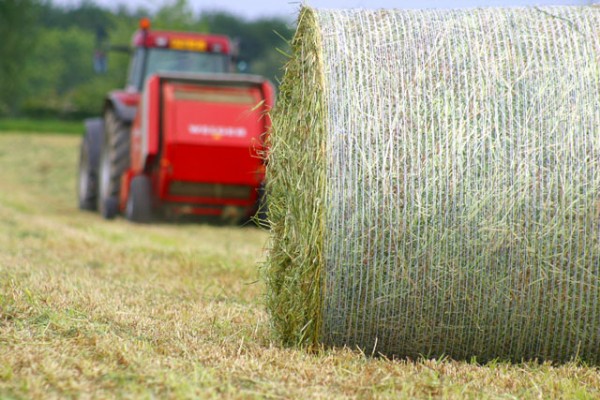

After extreme weather we are always glad to finally see some sunshine and higher temperatures. Some farmers can be very behind compared to previous other years and welcome sunshine is a great opportunity for making hay. Long sunshine hours and good temperatures are perfect drying conditions for conserving valuable forage which can be short due to bad weather.
Here is a quick guide to hay-making, but to begin with it's useful to understand some key terms when referring to (conserved) grass forage:
Gross energy or GE is the energy value of food eaten by livestock. This is processed by the animal and is then called digestible energy or DE, the remainder is passed straight out in faeces or urine. The DE is then broken down again by the methane making process, therefore the remaining energy is called metabolised energy or ME and this is used to measure feed values.
Good quality hay has an ME level of approximately 9 megajoules of ME/Kg, this is compared to grazing stock on grass which has an ME level of approximately 10.5 ME/Kg.
Below are some tips so you can obtain the best from your hay and therefore your winter fodder. Hay is made from fresh grass with a moisture content of approximately 80%, and then dried to approximately 20% so it can be stored.
How to make hay
1. Grass should be cut at the right stage in its growth. Although as grass gets older its moisture content falls, so too does the energy level of the feed therefore reducing the quality. It therefore best to cut for hay when DE levels are high. Cutting before the seed head appears will give the best quality but lowest yield. But earlier cutting also has higher moisture content and for practical reasons hay is normally taken when the seed head is well out.
2. Make hay in a hot dry spell. Nutrients can be leached from the hay crop if it rains. This can lead to up to 15% DM (Dry Matter) loss.
3. Nutrients can also be lost in respiration, therefore the quicker you can get hay dry the better. These losses can be equal to 1-2% DM.
4. When handling the hay crop there will be some losses due to machinery not picking up the crop efficiently etc. Keeping equipment well maintained will minimise these losses.
5. If conditions are not ideal dust and mould may become a problem in the hay crop. This is a major problem with hay used for horses. It arises in wet conditions were the chance of nutrient leeching is also high leading to further DM losses, as well as a potentially unusable crop.
Your hay crop
Your hay crop should have a sweet smell, be geen or yellow in colour and have no dust or mould present. Hay yields vary; a light crop would be 2-3 tonnes per hectare, where a heavy crop will be 5+ tonnes per hectare.
Date Posted: 9th July 2013



